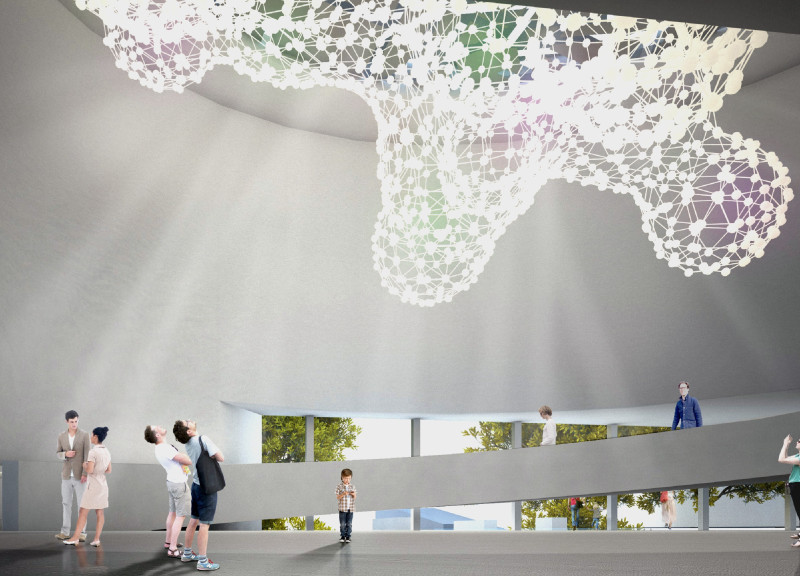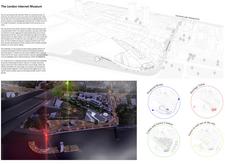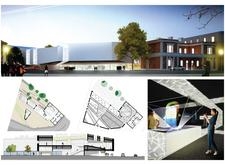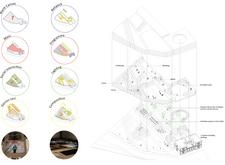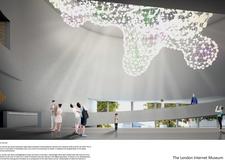5 key facts about this project
**Overview and Intent**
The London Internet Museum, situated at the former North Woolwich Station, seeks to merge historical significance with contemporary interpretations of the internet. Located within a vibrant urban context, the museum aims to create an immersive environment that reflects the intricacies of digital connectivity and its historical roots in transportation. The design emphasizes the thematic connection between railway networks and the modern exchange of information, fostering a comprehensive understanding of both realms.
**Spatial Dynamics and User Engagement**
The layout of the museum promotes flexibility and interaction among visitors. Various zones, including galleries, workshop spaces, and social areas, are interconnected through a fluid circulation path, designed to encourage exploration and engagement. The architectural form features sweeping lines and a striking geometric façade that visually represents the networks of data, while providing transparency and inviting natural light into the interiors. Special attention is given to the strategic placement of skylights and openings, enhancing the spatial quality and connection to the external environment.
**Material Choices and Environmental Considerations**
A diverse array of materials is employed throughout the museum to symbolize continuity and innovation. Glass facades allow for visual integration with the surrounding urban landscape, along with efficient thermal performance. Steel provides structural support for expansive, adaptable spaces, and concrete echoes the site's historical railway foundations. The use of lightweight panels for cladding diffuses light and contributes to an ethereal atmosphere. These material choices align with a commitment to sustainability, ensuring that the museum meets contemporary environmental standards while reflecting its historical context. The design ultimately facilitates both educational and community-oriented experiences, establishing the museum as a dynamic social hub.


